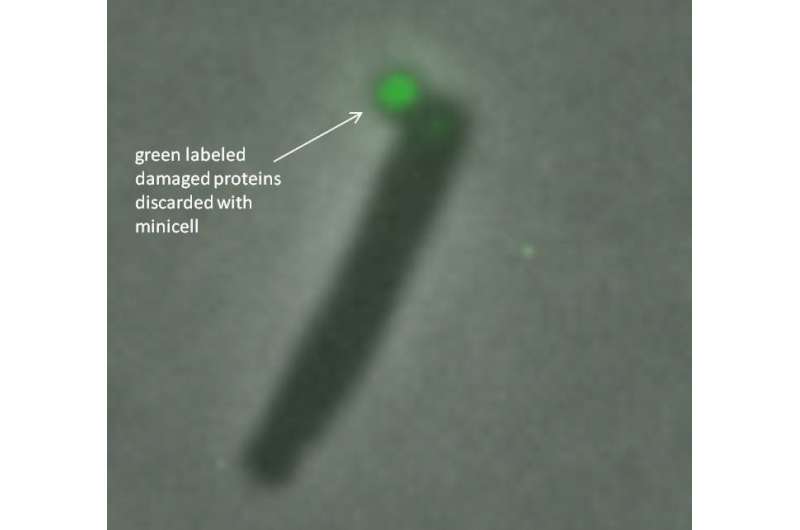

| Date | 26th, Sep 2018 |
|---|
 Bacteria discard damaged proteins inside a fluorescent green-labeled minicell. Credit: Chao Lab, UC San Diego
Bacteria discard damaged proteins inside a fluorescent green-labeled minicell. Credit: Chao Lab, UC San Diego
Scientists have known for decades that certain bacteria produce small spherical versions of themselves. Although they lack basic materials to reproduce or function like normal cells, recent interest in such "minicells" has spiked due to their proficiency as nano-sized delivery tools for drugs and vaccines to targeted cells and tissues.
Yet the natural role of minicells, which protrude like budding balloons off the ends of bacteria, has remained a mystery. Now, researchers at the University of California San Diego have demonstrated for the first time that minicells play a key function in the self-preservation of bacteria.
Publishing their results in the journal mSphere, the researchers discovered that E. coli bacteria discharge damaged proteins bundled inside minicells—a process not unlike a pod being launched from a spaceship—as a survival mechanism.
"It's amazing that even bacteria take out their garbage," said Camilla Rang, a research specialist in Division of Biological Sciences Professor Lin Chao's laboratory and first author of the paper. "We have shown that minicells can be beneficial for the bacteria and help them escape death by kicking out the damaged proteins."
To examine the link between minicells and the health of bacterial cells, the researchers tagged and tracked proteins with fluorescent markers. While under attack from antibiotics such as streptomycin, the researchers used microscopy techniques to follow damaged proteins in E. coli bacteria to the pole (end point) areas, then packaged inside the minicell and finally dispatched out of the bacteria.
